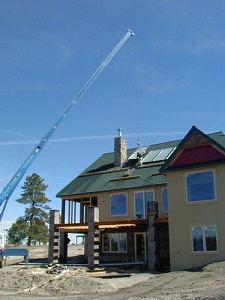Solar Thermal Alliance outlines opportunities and challenges, part 3
 Perhaps the biggest challenge or hurdle to the rise of solar thermal technology in Colorado and across the U.S. is the cheap price and availability of the main resource we’ve been heating water and space with for years—natural gas.
Perhaps the biggest challenge or hurdle to the rise of solar thermal technology in Colorado and across the U.S. is the cheap price and availability of the main resource we’ve been heating water and space with for years—natural gas.
Natural gas is cheaply priced, far lower than most energy professionals think it should be.
When natural gas is so readily available and affordable, there is little incentive for homeowners to install solar thermal systems to replace natural gas.
“Natural gas is the biggest economic selling barrier to the rise of solar thermal technology,” said Sam Weaver, president of Cool Energy, Inc.
The problems with natural gas are similar to those associated with other fossil fuels—though it’s readily available in Colorado, natural gas is still a finite resource, and though it’s cleaner burning than coal and petroleum, burning it still produces emissions.
“Natural gas shouldn’t be burned anyway. It’s more valuable as a feedstock for petroleum than it is as a fuel,” said Susan Perkins of Perkins Energy Law. “We should leave it in the ground for future generations. We should be using the sun. We need to monetize the value of not using natural gas.”
But the natural gas boon may be shifting already, according to Meillon.
“We have a growing population and consumption here in Colorado, and we are exporting our natural gas at alarming rates to states like California through the Rockies Express Pipeline,” Meillon said. “We need to manage our limited resources at home and can do that by displacing the use of natural gas through solar thermal technology.”
“The demand charges we see on the electric side are not being seen on the gas side as of present,” said Ron Horstman, president of energy and green building consultant firm, RWH Ventures.”If the demand continues to go up and the infrastructure that’s used to deliver natural gas goes down or gets more congested, the natural gas industry may say they can only deliver so much natural gas and start adding demand charges, which will drive the price up.”
So the solar thermal industry may have to wait until natural gas starts a new cycle in pricing.
“When you look, you can see significant volatility in natural gas prices over the past decade and all indications point to the fact that we’ll see volatility over the next decade,” said Neal Lurie, executive director of Colorado Solar Energy Industries Association. “Solar thermal technology is the answer to that.”
Pictured: Solar thermal panels on new construction, courtesy of Capitol Solar Energy.



